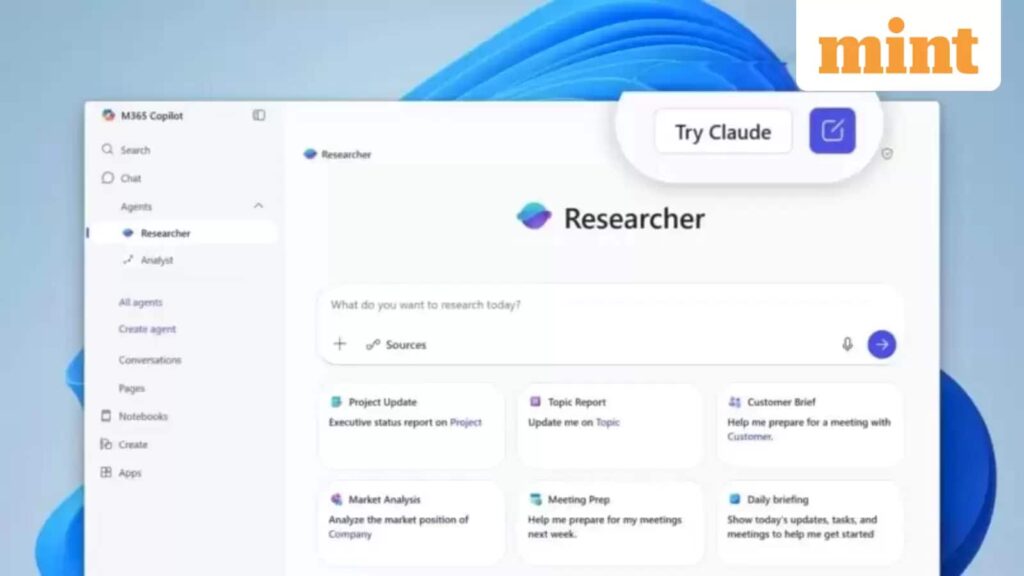Microsoft’s recent integration of Anthropic’s AI models, specifically Claude Sonnet 4 and Claude Opus 4.2, into its Microsoft 365 Copilot reflects a significant shift in the competitive landscape of AI-driven automation and enterprise productivity tools. This move not only diversifies the functionality of Microsoft 365 Copilot but also addresses an emerging demand for varied AI capabilities among business users. The growing reliance on AI and automation presents a critical consideration for SMB leaders and automation specialists as they seek to optimize their operations and enhance their competitive positioning.
The introduction of Anthropic’s models alongside existing OpenAI offerings is particularly noteworthy when considering the strengths and weaknesses of each platform. OpenAI, known for its sophisticated natural language processing and extensive training datasets, has long been a leader in the domain of AI, producing models that excel at generating human-like text. However, its models also face criticism, particularly concerning biases and ethical implications, which can impact an organization’s brand reputation and user trust.
Conversely, Anthropic places a strong emphasis on aligning AI behavior with human intentions, which is critical in sectors where ethical considerations are paramount. The Claude Sonnet and Opus models are formulated to prioritize interpretability and safety, making them attractive for businesses that are focused on compliance and ethical AI use. This distinction could represent a substantial competitive advantage for companies concerned about the long-term ramifications of AI applications.
Cost analysis is another critical factor that SMB leaders must evaluate. While Microsoft has historically been a backer of OpenAI, the partnership with Anthropic enables cost-sharing opportunities and potentially lowers the total cost of ownership for adopting AI technologies. By providing users the flexibility to switch between these models, Microsoft invites a dynamic cost-benefit analysis approach. Decision-makers can experiment with both offerings, identifying which model achieves superior outcomes in terms of return on investment and operational efficiency.
Furthermore, scalability is a central consideration as SMBs seek to grow this technology’s application within their operations. Microsoft’s recent announcement suggests that users can mix models, tailoring them to specific tasks and workflows. This adaptive capability positions organizations to scale their AI solutions according to evolving business needs, reducing reliance on a single vendor and fostering resilience in their technology stacks.
One case in point is the seamless integration capabilities offered through Microsoft 365 Copilot, allowing data flows between Anthropic’s models and other Microsoft applications. This interoperability could drive efficiencies, minimizing the friction associated with cumbersome data handling processes and enhancing productivity. Comparatively, platforms like Zapier may offer extensive integration options but can lack the depth of AI-driven insights that native enhancements to Microsoft applications provide.
As cloud-based solutions continue to proliferate, businesses must also evaluate the potential for advanced automation tools, which can be analyzed alongside the AI capabilities brought by OpenAI and Anthropic. Platforms like Make (formerly Integromat) have focused on visual automation, providing intuitive interfaces for automation workflows. This might appeal to teams looking for quick implementation without extensive technical knowledge. However, organizations seeking deeper AI integrations might find themselves gravitating toward Microsoft’s offering, which combines traditional automation with cutting-edge AI functionalities.
Ultimately, the key takeaway for SMB leaders is the importance of aligning their AI and automation strategies with organizational goals. While OpenAI and Anthropic models both offer robust capabilities, the choice between them should be informed by specific business needs, ethical considerations, and the desired impact on productivity and cost management. By leveraging the strengths of multiple platforms, organizations canCreate a tailored approach that optimizes both ROI and efficiency.
In summary, Microsoft’s embrace of Anthropic’s AI models signals an evolving landscape in AI applications that requires close examination by business leaders and automation experts. The ability to choose and combine technologies will enhance organizational agility, giving companies an edge in an increasingly competitive market.
FlowMind AI Insight: As businesses become more reliant on AI technologies, leaders must prioritize ethical use and align AI strategies with their overall objectives. A multi-model approach not only provides flexibility but also mitigates risks associated with vendor lock-in and evolving technological landscapes.
Original article: Read here
2025-09-24 17:45:00

